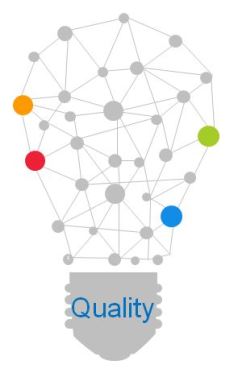The Quality Analysis at a glance
 The PITSS Quality Analysis builds upon the Status Quo Analysis. With the Quality Analysis you receive a detailed insight into the results of the Status Quo Analysis. You are given differentiated metrics based on recognized quality metrics such as Halstead and McCabe and the Maintainability Index. With this very informative analysis of your application’s quality, it is possible to determine all the weaknesses in the application software and documentation. The Quality Analysis will show you the areas in your system where action is needed, how the maintainability can be improved and the further development can be facilitated in order to reduce the operating costs of your application. Our recommendations following the Quality Analysis will show you the path to successfully achieve your goals and objectives.
The PITSS Quality Analysis builds upon the Status Quo Analysis. With the Quality Analysis you receive a detailed insight into the results of the Status Quo Analysis. You are given differentiated metrics based on recognized quality metrics such as Halstead and McCabe and the Maintainability Index. With this very informative analysis of your application’s quality, it is possible to determine all the weaknesses in the application software and documentation. The Quality Analysis will show you the areas in your system where action is needed, how the maintainability can be improved and the further development can be facilitated in order to reduce the operating costs of your application. Our recommendations following the Quality Analysis will show you the path to successfully achieve your goals and objectives.
Components in detail
Comment Ratio
Detailed evaluation of the comments in the program units. This can show you if you have a good inline documentation of your Application. Here you can see if a new developer can easily understands the functionality behind the procedure.
Object Distribution
The object distribution indicates the degree of referencing within the application. Referencing means the inheritance of objects, program units and their properties within a Form to an external PLL , OLB or FMB file. To increase the productivity and modularization of an application and minimize maintenance efforts simultaneously , it is recommended to achieve a high degree of referencing .
Quality Metrics
With Software metrics you can measure and compare various quality aspects of program units.They help in identifying vulnerability of applications and enable a continuous reporting of the development process.
The metrics used are clearly defined as Industry Standards and distributed in many languages.
The simplest metric is counting the statements of a program unit. This approach has been refined already in the 1970s by McCabe and Halstead.
McCabe calculates a complexity, in which the branching depth of a program unit is evaluated.
Halstead in contrast, uses the shared vocabulary (operands and operators) and the lexical size of the program unit various key figures to calculate the complexity. In addition to the complexity, the time can be computed that would be necessary for the programming of the program units.
As newest a mixed metric of Maintainability Index has been established. The Maintainability Index from the 90s is based on the complexities of Halstead and McCabe and connects them with the lines of code and Lines of Documentation.
You can improve the software metrics by the separation of program units.
Naming Conventions
The purpose of naming conventions is to improve the readability and thus reducing maintenance costs. The advantage arises from the fact that all or different types of objects with different Prefixes or Suffixes can be distinguished from each other.
Maintainability
Maintainability describes the effort required to operate an application and further develop. Important criteria for the Maintainability, is the clarity , documentation and modularization of the Application.
Summary
After a Quality Analysis you have a basis to:
- setup a Strategy for the furture
- reduce the Maintanability effort
- reduce the error rate
- increase the stability
- take the right measures for facilitating the development
- shorten the learning curve for new employees
The result of the Quality Analysis are Statistics of your Application and recommendations how to improve software quality in your Environment.
Please take a look at all of our Analysis we offer: Tool Supported Analyses
You can also take a look at previous Posts about our Analyses:

Pingback: Getting an inside View of your Oracle Forms and Reports Application | Patrick's Oracle Modernization Experience